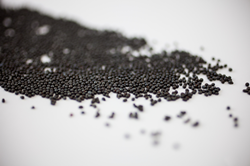Valence Wichita Operations Increases Shot Peen Capabilities
Valence Surface Technologies enhances the current shot peen infrastructure to enable peening for all sized parts processed between their Wichita and Grove facilities.

Valence Surface Technologies (Wichita, Kan) has completed the installation of a 30-foot long pass-through robotically controlled shot peen machine to greatly boost the current shot peen capabilities in the Central United States.
The equipment is stated to sit in a 30' x 5' x 3.5' work envelope. Other designed features include robotic control equipped with four separate peening nozzles, variable controlled PCL’s to decrease intensity to prevent warpage and pass-through setup allowing for a quick rack and runs part introduction system
Valence states the equipment is approved for BAC5730, AIPS/AIPI 02-02-004, BAPS 185-002, AMS 2430 and GAMPS 2102.
“We are constantly striving to improve our capabilities for our customer base. This equipment increases the ability to reduce delays and cost resulting from transit by offering all required processes in a single facility,” states Freddy Hutt, Facility Manager
Valence Wichita services are available for aluminum, steel, titanium and chrome materials. In addition to our metal finishing services, Valence also offers supply chain management, chrome coating deposition, differential deposition, mismatched or worn surface repair, CNC cylindrical grinding, centerless grinding infeed and thru feed and vertical horizontal honing.
Valence Surface Technologies |valencesurfacetech.com/
Related Content
-
Best Practices for Blast Room Maintenance
A high-quality blast room is a large investment. Brandon Acker of Titan Abrasive Systems discusses proper care for your blasting equipment.
-
Calculating Applied Media Force During Vibratory Finishing
What appear to be identically set-up vibratory bowls will finish identical loads of parts in varying time cycles. This paper offers a new technique to better predict what the operator will produce, by measuring the force applied to the parts. It is the efficiency of that force which controls the efficiency and speed of the refinement cycle.
-
Blast Nozzle Features Enhanced Noise Reduction
Kennametal adds noise-reducing Blast Ninja to portfolio of abrasive blast nozzles.















.jpg;maxWidth=300;quality=90)
